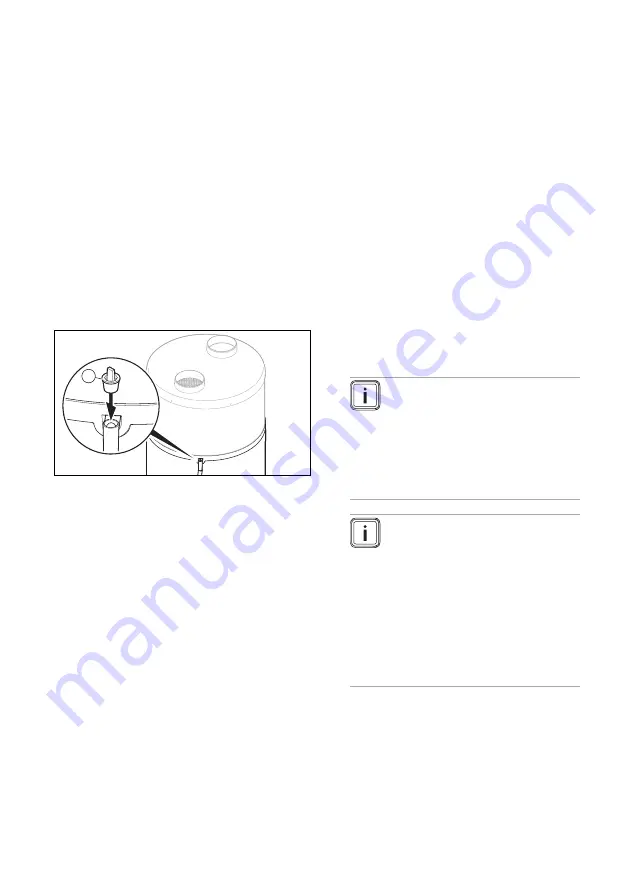
50
Operating instructions 8000015877_00
4 Operation
4.1 Operating concept
You can use the three buttons to control
the product.
–
You can press the menu button to ac-
cess the main menu.
–
You can press the rotary knob to select
the menu items and confirm set values.
You can press the rotary knob to set
these values.
–
You can use the clock button to set the
time.
The display switches off 180 seconds after
the last operation.
4.2 Switching on the product
1
1.
Before starting up the product, ensure
that the plugs
(1)
have been removed
from the condensate discharge con-
nection.
2.
Ensure that the stopcock upstream of
the safety assembly at the cold water
inlet is open.
3.
Before switching on the power supply,
ensure that the domestic hot water
cylinder is full.
4.
Ensure that the product has been
connected to the power supply.
5.
Press the product's on/off button.
◁
The display switches on.
◁
A green LED lights up on the
display.
◁
The background lighting on the
display flashes and prompts you
to set the language.
–
Turn the rotary knob to set the
language. Press the rotary knob
to confirm the selection.
◁
The product only offers you the lan-
guage selection when it is switched
on for the first time. However, you
have the option to change the lan-
guage setting,
→
Operating instruc-
tions.
◁
The heat pump only starts when
the cold water temperature is be-
low the set water temperature and
when, according to the operating
programme, the switch-on time cor-
responds to the heat-up time and
heating is permitted by the electri-
city tariff.
◁
When the heat pump is running,
there is an air flow at the air inlet
and outlet.
Note
After the initial start-up, de-
pending on the air intake tem-
perature and cold water tem-
perature, the heat pump re-
quires 5 to 12 hours to reach a
temperature of 55 °C.
Note
The thermodynamic water
heater operates with the heat
pump as priority if the temper-
ature of the intake air is within
a range between -7 °C and
+45 °C. Outside of this tem-
perature range, the domestic
hot water is only generated via
the electric back-up heater.
















































